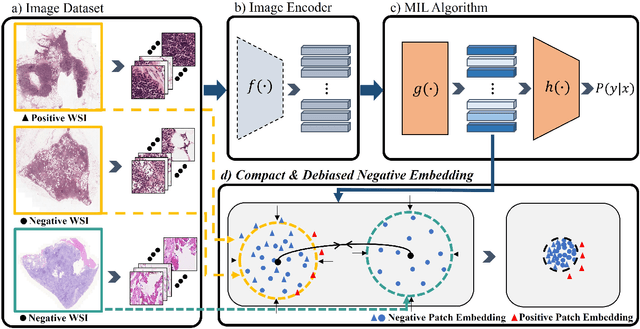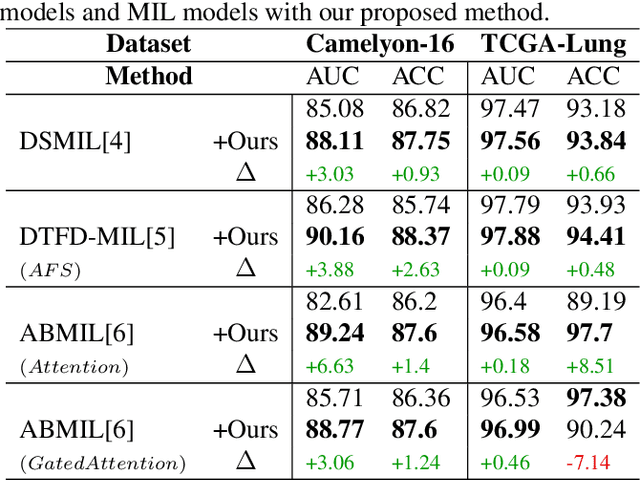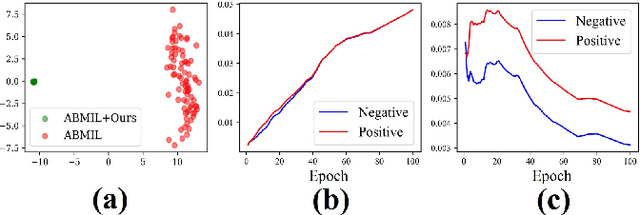Joohyung Lee
Arizona State University
Fuzzy Propositional Formulas under the Stable Model Semantics
Jun 15, 2025Abstract:We define a stable model semantics for fuzzy propositional formulas, which generalizes both fuzzy propositional logic and the stable model semantics of classical propositional formulas. The syntax of the language is the same as the syntax of fuzzy propositional logic, but its semantics distinguishes stable models from non-stable models. The generality of the language allows for highly configurable nonmonotonic reasoning for dynamic domains involving graded truth degrees. We show that several properties of Boolean stable models are naturally extended to this many-valued setting, and discuss how it is related to other approaches to combining fuzzy logic and the stable model semantics.
LPMLN, Weak Constraints, and P-log
Jun 15, 2025Abstract:LPMLN is a recently introduced formalism that extends answer set programs by adopting the log-linear weight scheme of Markov Logic. This paper investigates the relationships between LPMLN and two other extensions of answer set programs: weak constraints to express a quantitative preference among answer sets, and P-log to incorporate probabilistic uncertainty. We present a translation of LPMLN into programs with weak constraints and a translation of P-log into LPMLN, which complement the existing translations in the opposite directions. The first translation allows us to compute the most probable stable models (i.e., MAP estimates) of LPMLN programs using standard ASP solvers. This result can be extended to other formalisms, such as Markov Logic, ProbLog, and Pearl's Causal Models, that are shown to be translatable into LPMLN. The second translation tells us how probabilistic nonmonotonicity (the ability of the reasoner to change his probabilistic model as a result of new information) of P-log can be represented in LPMLN, which yields a way to compute P-log using standard ASP solvers and MLN solvers.
Think before You Simulate: Symbolic Reasoning to Orchestrate Neural Computation for Counterfactual Question Answering
Jun 12, 2025Abstract:Causal and temporal reasoning about video dynamics is a challenging problem. While neuro-symbolic models that combine symbolic reasoning with neural-based perception and prediction have shown promise, they exhibit limitations, especially in answering counterfactual questions. This paper introduces a method to enhance a neuro-symbolic model for counterfactual reasoning, leveraging symbolic reasoning about causal relations among events. We define the notion of a causal graph to represent such relations and use Answer Set Programming (ASP), a declarative logic programming method, to find how to coordinate perception and simulation modules. We validate the effectiveness of our approach on two benchmarks, CLEVRER and CRAFT. Our enhancement achieves state-of-the-art performance on the CLEVRER challenge, significantly outperforming existing models. In the case of the CRAFT benchmark, we leverage a large pre-trained language model, such as GPT-3.5 and GPT-4, as a proxy for a dynamics simulator. Our findings show that this method can further improve its performance on counterfactual questions by providing alternative prompts instructed by symbolic causal reasoning.
System ASPMT2SMT:Computing ASPMT Theories by SMT Solvers
Jun 12, 2025Abstract:Answer Set Programming Modulo Theories (ASPMT) is an approach to combining answer set programming and satisfiability modulo theories based on the functional stable model semantics. It is shown that the tight fragment of ASPMT programs can be turned into SMT instances, thereby allowing SMT solvers to compute stable models of ASPMT programs. In this paper we present a compiler called {\sc aspsmt2smt}, which implements this translation. The system uses ASP grounder {\sc gringo} and SMT solver {\sc z3}. {\sc gringo} partially grounds input programs while leaving some variables to be processed by {\sc z3}. We demonstrate that the system can effectively handle real number computations for reasoning about continuous changes.
LLM+AL: Bridging Large Language Models and Action Languages for Complex Reasoning about Actions
Jan 01, 2025



Abstract:Large Language Models (LLMs) have made significant strides in various intelligent tasks but still struggle with complex action reasoning tasks that require systematic search. To address this limitation, we propose a method that bridges the natural language understanding capabilities of LLMs with the symbolic reasoning strengths of action languages. Our approach, termed "LLM+AL," leverages the LLM's strengths in semantic parsing and commonsense knowledge generation alongside the action language's proficiency in automated reasoning based on encoded knowledge. We compare LLM+AL against state-of-the-art LLMs, including ChatGPT-4, Claude 3 Opus, Gemini Ultra 1.0, and o1-preview, using benchmarks for complex reasoning about actions. Our findings indicate that, although all methods exhibit errors, LLM+AL, with relatively minimal human corrections, consistently leads to correct answers, whereas standalone LLMs fail to improve even with human feedback. LLM+AL also contributes to automated generation of action languages.
Game-Theoretic Joint Incentive and Cut Layer Selection Mechanism in Split Federated Learning
Dec 10, 2024



Abstract:To alleviate the training burden in federated learning while enhancing convergence speed, Split Federated Learning (SFL) has emerged as a promising approach by combining the advantages of federated and split learning. However, recent studies have largely overlooked competitive situations. In this framework, the SFL model owner can choose the cut layer to balance the training load between the server and clients, ensuring the necessary level of privacy for the clients. Additionally, the SFL model owner sets incentives to encourage client participation in the SFL process. The optimization strategies employed by the SFL model owner influence clients' decisions regarding the amount of data they contribute, taking into account the shared incentives over clients and anticipated energy consumption during SFL. To address this framework, we model the problem using a hierarchical decision-making approach, formulated as a single-leader multi-follower Stackelberg game. We demonstrate the existence and uniqueness of the Nash equilibrium among clients and analyze the Stackelberg equilibrium by examining the leader's game. Furthermore, we discuss privacy concerns related to differential privacy and the criteria for selecting the minimum required cut layer. Our findings show that the Stackelberg equilibrium solution maximizes the utility for both the clients and the SFL model owner.
Compact and De-biased Negative Instance Embedding for Multi-Instance Learning on Whole-Slide Image Classification
Feb 16, 2024



Abstract:Whole-slide image (WSI) classification is a challenging task because 1) patches from WSI lack annotation, and 2) WSI possesses unnecessary variability, e.g., stain protocol. Recently, Multiple-Instance Learning (MIL) has made significant progress, allowing for classification based on slide-level, rather than patch-level, annotations. However, existing MIL methods ignore that all patches from normal slides are normal. Using this free annotation, we introduce a semi-supervision signal to de-bias the inter-slide variability and to capture the common factors of variation within normal patches. Because our method is orthogonal to the MIL algorithm, we evaluate our method on top of the recently proposed MIL algorithms and also compare the performance with other semi-supervised approaches. We evaluate our method on two public WSI datasets including Camelyon-16 and TCGA lung cancer and demonstrate that our approach significantly improves the predictive performance of existing MIL algorithms and outperforms other semi-supervised algorithms. We release our code at https://github.com/AITRICS/pathology_mil.
Exploring the Privacy-Energy Consumption Tradeoff for Split Federated Learning
Nov 15, 2023Abstract:Split Federated Learning (SFL) has recently emerged as a promising distributed learning technology, leveraging the strengths of both federated learning and split learning. It emphasizes the advantages of rapid convergence while addressing privacy concerns. As a result, this innovation has received significant attention from both industry and academia. However, since the model is split at a specific layer, known as a cut layer, into both client-side and server-side models for the SFL, the choice of the cut layer in SFL can have a substantial impact on the energy consumption of clients and their privacy, as it influences the training burden and the output of the client-side models. Moreover, the design challenge of determining the cut layer is highly intricate, primarily due to the inherent heterogeneity in the computing and networking capabilities of clients. In this article, we provide a comprehensive overview of the SFL process and conduct a thorough analysis of energy consumption and privacy. This analysis takes into account the influence of various system parameters on the cut layer selection strategy. Additionally, we provide an illustrative example of the cut layer selection, aiming to minimize the risk of clients from reconstructing the raw data at the server while sustaining energy consumption within the required energy budget, which involve trade-offs. Finally, we address open challenges in this field including their applications to 6G technology. These directions represent promising avenues for future research and development.
Safe Formulas in the General Theory of Stable Models
Jul 15, 2023Abstract:Safe first-order formulas generalize the concept of a safe rule, which plays an important role in the design of answer set solvers. We show that any safe sentence is equivalent, in a certain sense, to the result of its grounding -- to the variable-free sentence obtained from it by replacing all quantifiers with multiple conjunctions and disjunctions. It follows that a safe sentence and the result of its grounding have the same stable models, and that the stable models of a safe sentence can be characterized by a formula of a simple syntactic form.
Causal Laws and Multi-Valued Fluents
Jul 15, 2023Abstract:This paper continues the line of work on representing properties of actions in nonmonotonic formalisms that stresses the distinction between being "true" and being "caused", as in the system of causal logic introduced by McCain and Turner and in the action language C proposed by Giunchiglia and Lifschitz. The only fluents directly representable in language C+ are truth-valued fluents, which is often inconvenient. We show that both causal logic and language C can be extended to allow values from arbitrary nonempty sets. Our extension of language C, called C+, also makes it possible to describe actions in terms of their attributes, which is important from the perspective of elaboration tolerance. We describe an embedding of C+ in causal theories with multi-valued constants, relate C+ to Pednault's action language ADL, and show how multi-valued constants can be eliminated in favor of Boolean constants.
 Add to Chrome
Add to Chrome Add to Firefox
Add to Firefox Add to Edge
Add to Edge